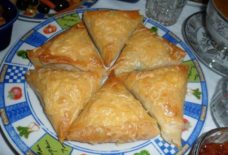New York museums pull Picasso, extend Muslim art shows in divisive cultural war on prejudice in Trump’s America
Museums across New York are waging a cultural war on prejudice in Donald Trump’s America, flexing the soft power of art and photography to compound the citywide climate of protest.
From talks about Islamic art to a Muslim exhibition, swapping Picasso and Matisse for Iranian, Sudanese and Iraqi artists, and extending a children’s exhibition, museums have dreamed up multiple ways to promote art and education in the wake of Trump’s short-lived travel ban on refugees and citizens from seven Muslim-majority countries.
Building on the city’s culinary diversity, foodies are offering tours of Syrian, Yemeni and Iranian cuisines, and have introduced curious New Yorkers to perhaps lesser-known culinary delights of Somalia.
“We wanted to be out here,” explains Sheila Canby, head of Islamic art at the Metropolitan Museum of Art, “showing our public what a deep, resonant, important contribution these cultures make to who we are.”
The Met, one of the largest museums in the world, is running its first month-long programme of two 10-minute talks each Friday, specifically to explore Islamic and Near Eastern art.
Canby’s remarks underscore the debt that Western civilisation owes to the Islamic world, and she notes how an Arabic manuscript, translated from Greek and then into Latin, passed on knowledge.
“Without Baghdad in the ninth and 10th century, we wouldn’t know any of these things, and so it’s all a chain, and we shouldn’t forget that,” she says.
A 10-minute bus ride up the road, the Museum of the City of New York mounted, in under three weeks, an exhibition of photographs chronicling Muslim life in the city, dating back to at least the 1620s, and the diversity of the communities and their contribution to daily life.
“Educating and informing, that is one major role that our institutions play,” says chief curator Sarah Henry. “Knowledge and understanding is always a good antidote to prejudice and irrational fears.”
While Henry is not attributing it to a single installation, museum attendance for the exhibition’s inaugural weekend was up 80 per cent, compared with the same time last year.
In Midtown, the Museum of Modern Art replaced seven Western works on display, including art by Picasso and Matisse, with pieces by Iranian, Iraqi and Sudanese artists a week after the travel ban went into effect.
On the Upper West Side, the Children’s Museum of Manhattan extended, by a year, the run of its “America to Zanzibar” Muslim culture exhibition that’s been seen by more than 350,000 visitors.
Next year, it will tour to Chattanooga, Tennessee, where the FBI said a 2015 shooting was inspired by radical Islamist propaganda, and then to Philadelphia.
“With any exhibit, you’re hoping you’ve hit the mark, and for us – seeing this and seeing the families in it, and the children playing – it has been incredibly rewarding,” says the show’s curator, Lizzy Martin.
Even if initiatives are preaching to the converted in one of America’s most liberal cities, painter Sayan Ben Bady, 34, says that any gesture, however small, is worthwhile.
A Canadian visiting from Paris, Bady attended two Met talks, drawn in as a “half Muslim” who knew “almost nothing” about Islamic art.
“I wonder how this affects anything,” he says. “I think that even if there were only one person … things don’t really need to have a large number to make a difference.”








